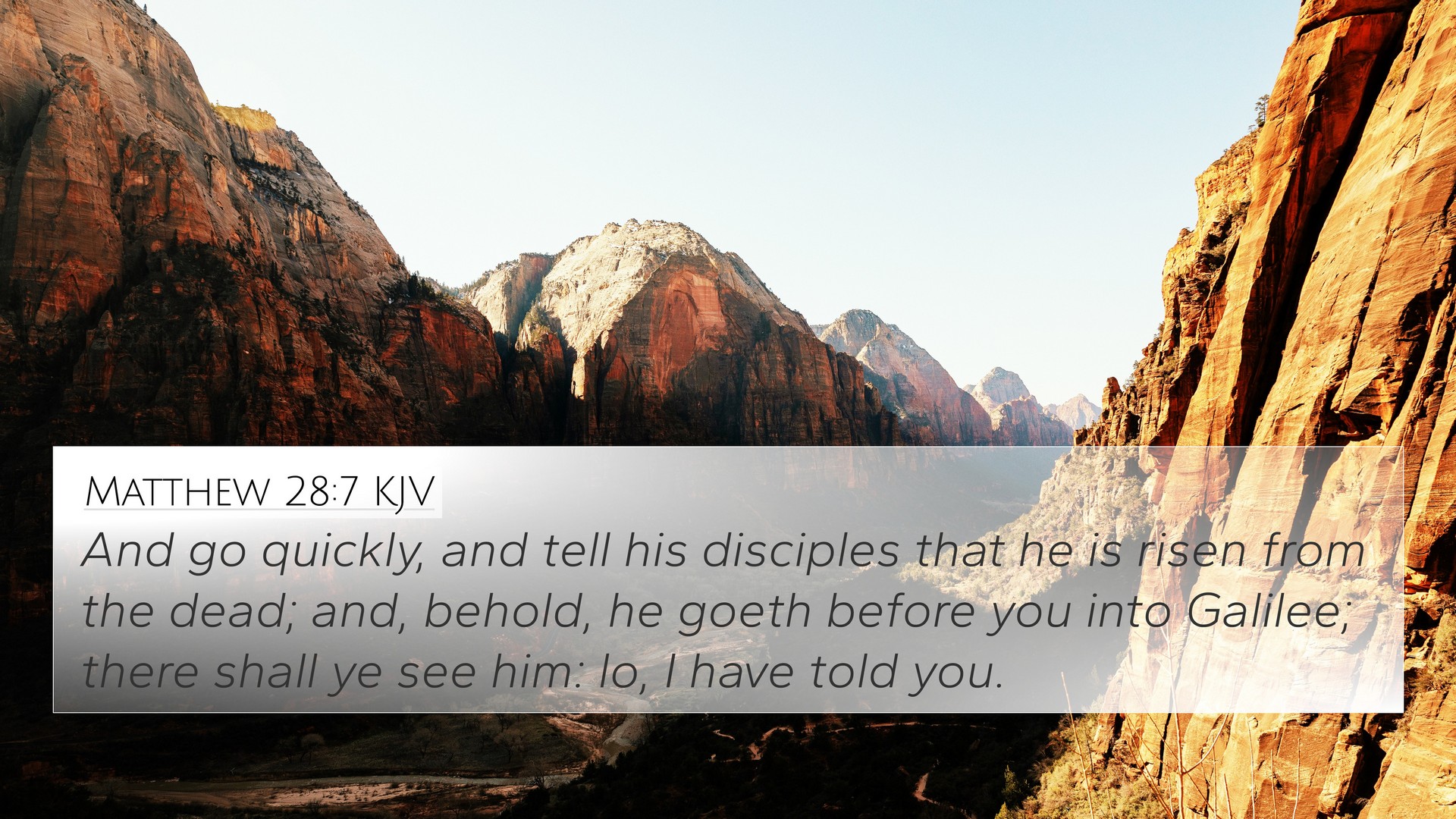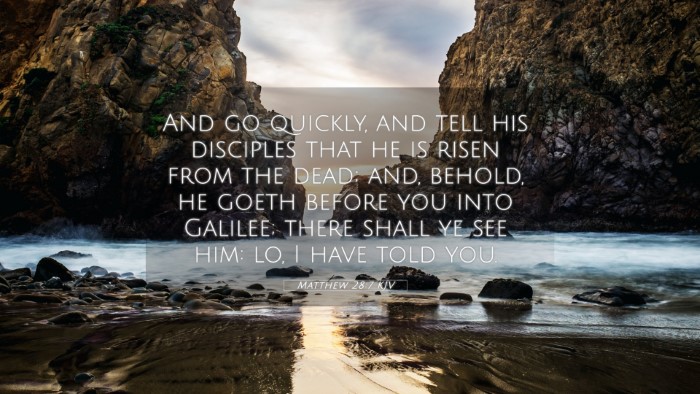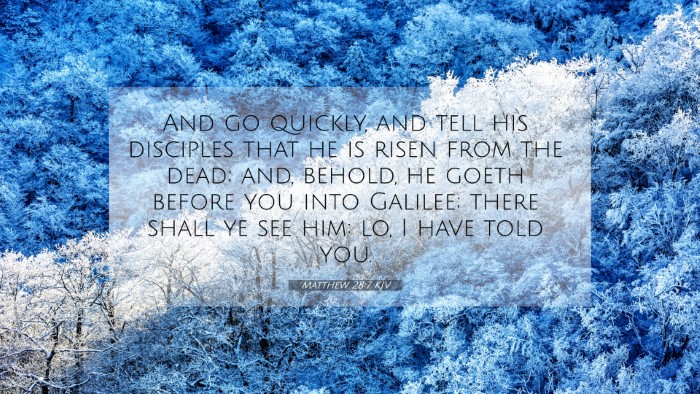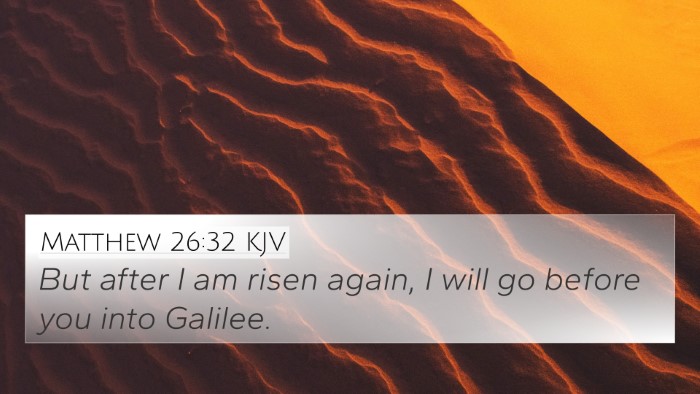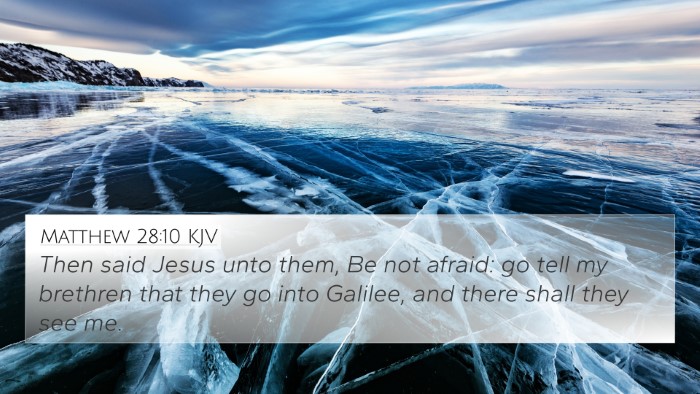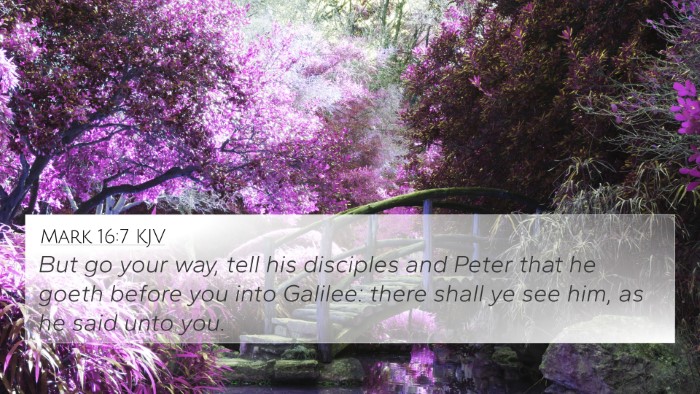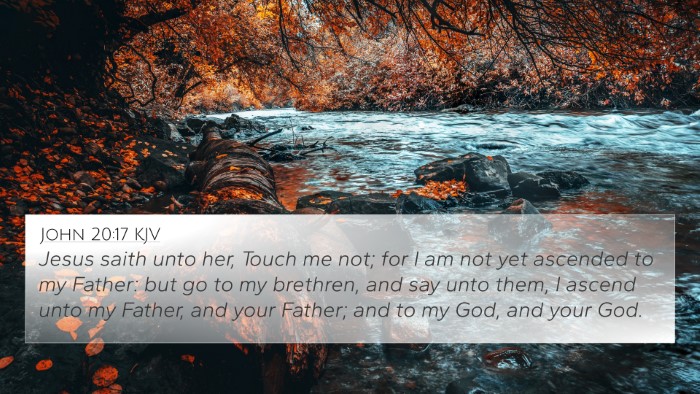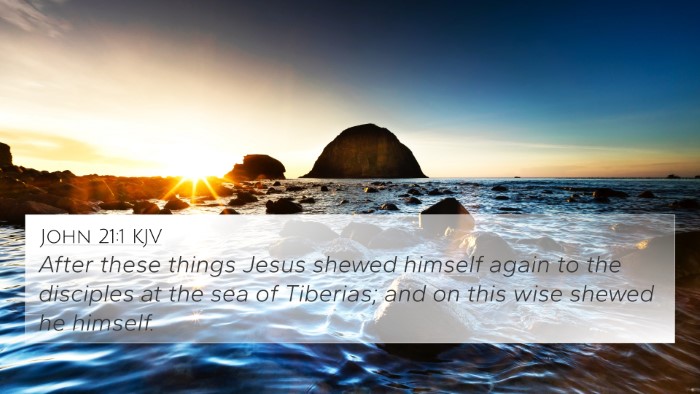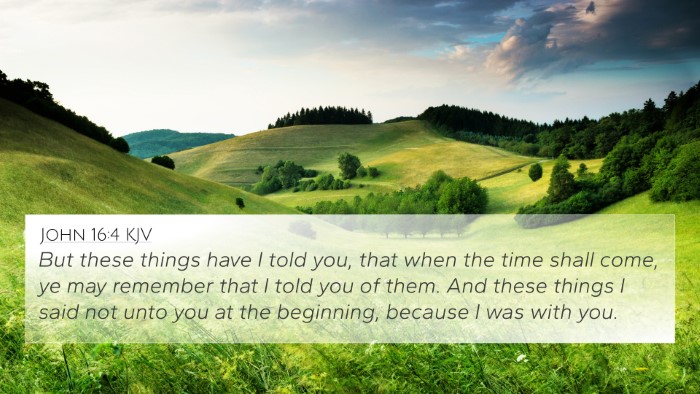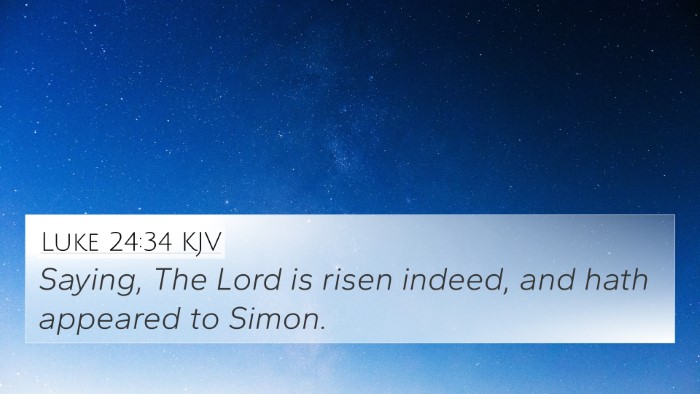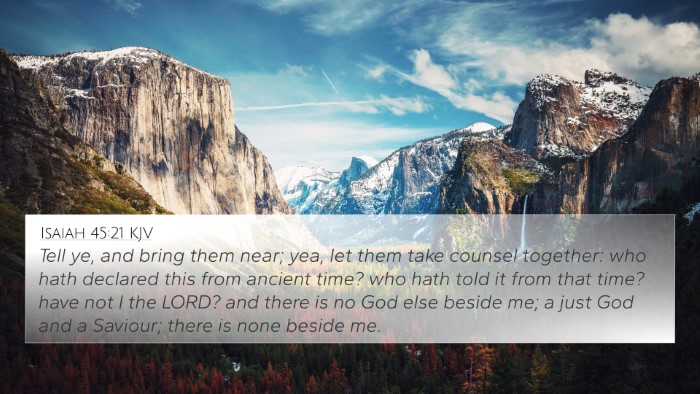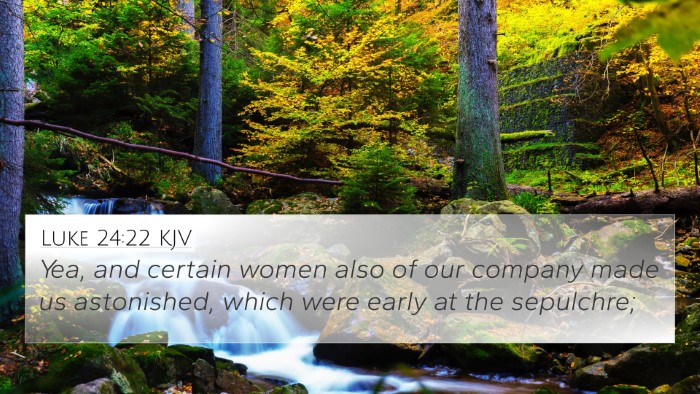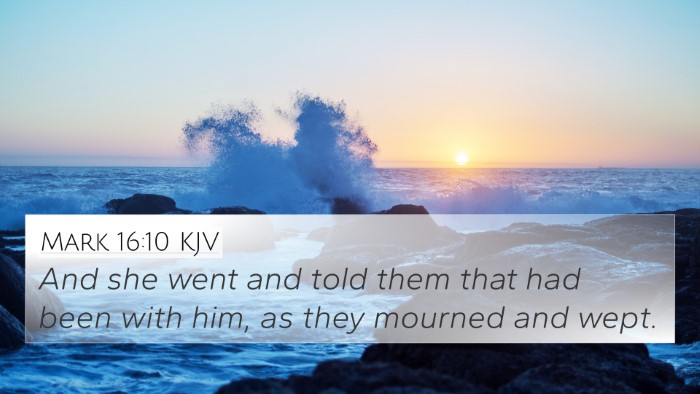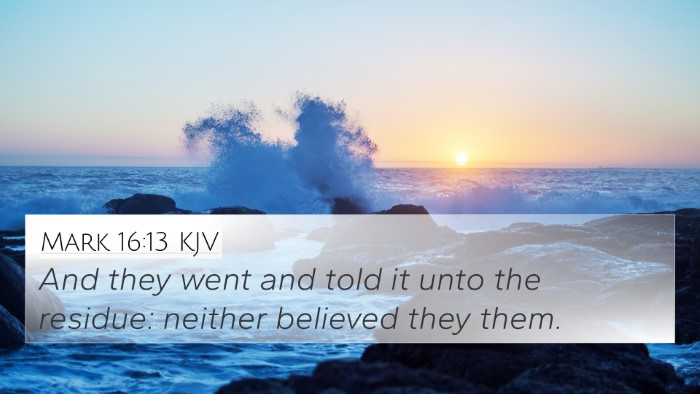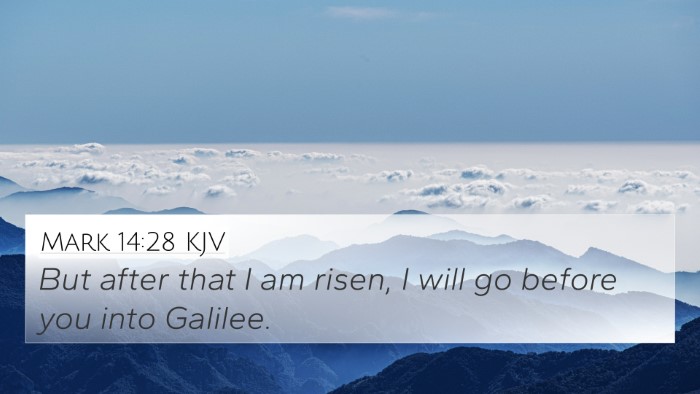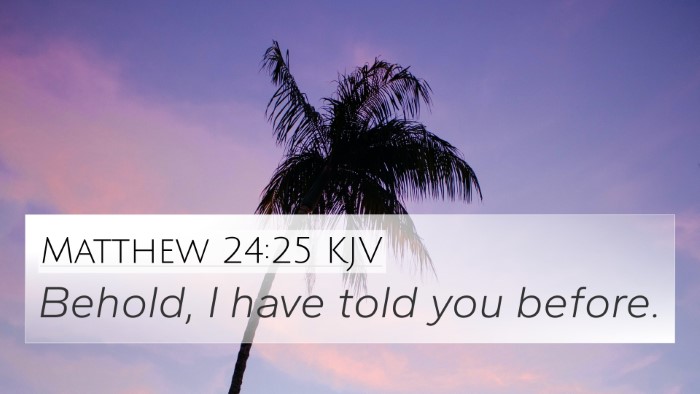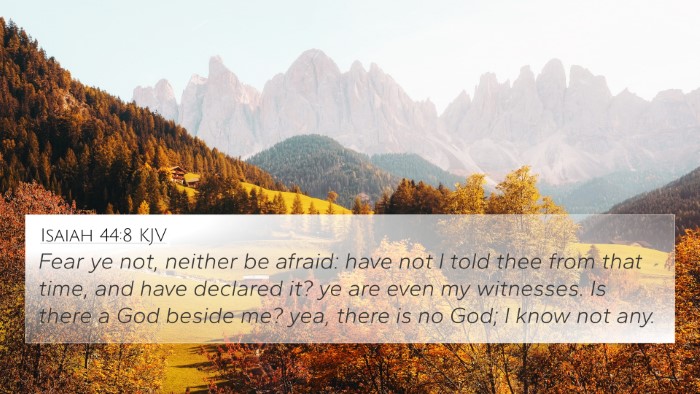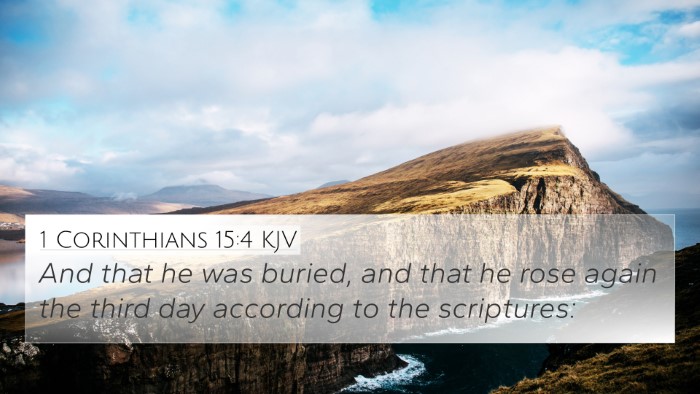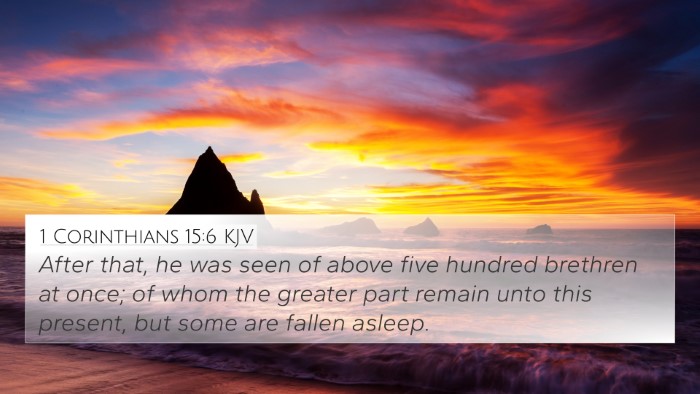Understanding Matthew 28:7
Matthew 28:7 states: "And go quickly, and tell his disciples that he is risen from the dead; and, behold, he goeth before you into Galilee; there shall ye see him: lo, I have told you."
This verse occurs in the context of the resurrection of Jesus, highlighting the message given to the women at the tomb by the angels. The resurrection is central to Christian faith, and this proclamation serves as a crucial turning point in the Gospels.
Summary of Meaning
In this verse, we find several important insights derived from public domain commentaries, particularly those by Matthew Henry, Albert Barnes, and Adam Clarke. The essence of the message can be summarized as follows:
- Resurrection Announcement: The announcement of Jesus' resurrection is a foundational element of Christian belief, demonstrating God's power over death.
- Commissioning of Disciples: The directive to go and tell signifies the important role of the disciples as witnesses to this monumental event.
- Affirmation of Jesus' Promises: By stating that He goes before them into Galilee, it affirms Jesus' earlier promises and assures the disciples of His ongoing presence.
- Urgency of the Message: The instruction to "go quickly" reflects the urgency of spreading the good news of the resurrection.
Insights from Public Domain Commentaries
The interpretations of this verse through the lens of respected commentaries deepen our understanding in various ways:
Matthew Henry
Henry emphasizes the importance of the resurrection as the pivotal moment that provides hope to believers. The urgency to share this news reflects not only the excitement of the event but also the responsibility placed on those who witness it.
Albert Barnes
Barnes highlights the significance of the angelic message, serving as confirmation of Jesus' divine nature and mission. The angel instructs the women to share this message, which reinforces the theme of evangelism and the importance of being active participants in spreading the faith.
Adam Clarke
Clarke discusses the geographical aspect of the message, mentioning Galilee's role in Jesus' ministry. He notes that the disciples' encounter with the risen Christ in Galilee serves to reaffirm their faith and mission. Clarke also underscores the personal relationship that Jesus establishes with His followers, appearing to them in a familiar setting.
Cross-References to Matthew 28:7
Understanding the connections between Bible verses is vital to grasping the full message of scripture. Here are several verses that relate closely to Matthew 28:7:
- Matthew 26:32: "But after I am raised up, I will go before you to Galilee."
- Mark 16:7: "But go, tell his disciples and Peter that he is going before you to Galilee."
- Luke 24:6-7: "He is not here, but has risen. Remember how he told you, while he was still in Galilee…"
- John 20:17: "Jesus said to her, 'Do not cling to me, for I have not yet ascended to the Father; but go to my brothers and say to them, I am ascending to my Father and your Father, to my God and your God.'
- Matthew 28:10: "Then Jesus said to them, 'Do not be afraid; go and tell my brothers to go to Galilee, and there they will see me.'
- 1 Corinthians 15:6: "Then he appeared to more than five hundred brothers at one time, most of whom are still alive, though some have fallen asleep."
- Acts 1:3: "He presented himself alive to them after his suffering by many proofs, appearing to them during forty days and speaking about the kingdom of God."
Thematic Connections
The connections between these scriptures provide a comprehensive understanding of the resurrection narrative:
- Fulfillment of Prophecy: Many of these passages reference the fulfillment of Jesus’ own predictions about His resurrection.
- Importance of Evangelism: The call to tell others about the resurrection is echoed throughout the Gospels and the early church.
- Role of Women in the Resurrection Account: The mention of women as the first witnesses accentuates their place in the early Christian community.
Tools for Bible Cross-Referencing
For those seeking deeper insights through cross-referencing, utilizing tools such as a Bible concordance or a Bible cross-reference guide can enhance understanding.
By employing a cross-reference Bible study method, readers can explore themes and connections that bind different verses together, offering a richer appreciation of the text as a whole.
Conclusion
The message encapsulated in Matthew 28:7 serves not only as a pivotal moment in the resurrection narrative but also as a call for believers to engage actively in sharing their faith. By exploring cross-references and thematic connections with other Bible verses, one can enrich their understanding and appreciate the interconnected nature of scriptural teachings.
Engaging with these texts through cross-referencing Bible study methods allows for a deeper comprehension of how individual verses support and illuminate broader theological themes.
